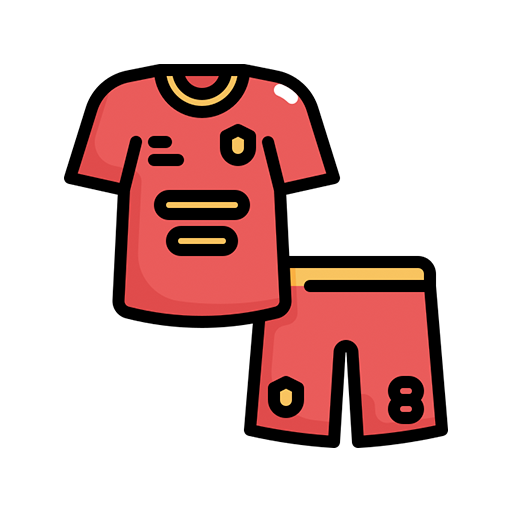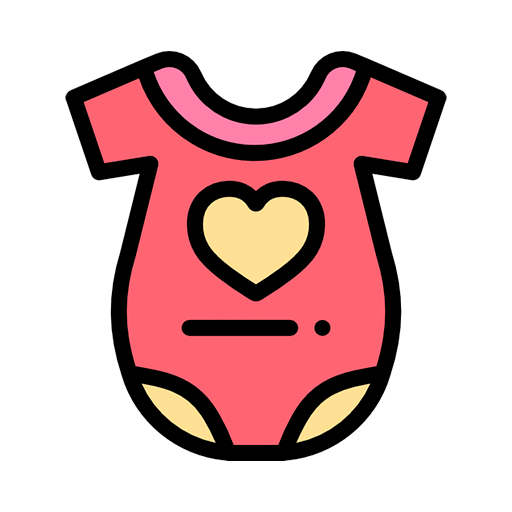
Materials and Safety of Baby Clothing
Share
How Do the Materials of Baby Clothing Affect Your Baby's Skin?
When it comes to baby clothing, parents often focus on the style and comfort of the clothes, but it's important to also consider the materials used in the clothing. The materials of baby clothing can have a significant impact on your baby's delicate skin, which is why it's important to choose clothing made from safe and comfortable materials.
Synthetic materials such as polyester and nylon may be cheaper and easier to care for, but they can also be harsh on your baby's skin, causing irritation and even rashes. Natural materials such as cotton and bamboo are a better choice for baby clothing as they are soft, breathable, and gentle on sensitive skin.
It's also important to consider the dyes and chemicals used in the manufacturing of baby clothing. Look for clothing that is labeled "hypoallergenic" or "organic" as these are typically made without the use of harmful chemicals.
When washing baby clothing, it's important to use a gentle, fragrance-free detergent and avoid using fabric softeners or dryer sheets as these can also irritate your baby's skin.
In summary, the materials used in baby clothing can have a significant impact on your baby's skin. Choose clothing made from natural, soft, and breathable materials, and look for clothing that is labeled as hypoallergenic or organic. Taking these steps can help ensure that your baby's delicate skin stays safe and healthy.
How to Choose Safe and Comfortable Materials for Baby Clothing?
Choosing safe and comfortable materials for baby clothing is crucial to ensure the health and well-being of your little one. Here are some tips to help you make the right choices:
- Opt for natural materials: Natural materials such as cotton, bamboo, and wool are soft, breathable, and gentle on your baby's skin. They are also less likely to cause irritation or allergic reactions.
- Avoid synthetic materials: Synthetic materials such as polyester and nylon may be cheaper, but they are often less breathable and can cause skin irritation or rashes.
- Look for certified organic clothing: Organic clothing is made from materials that have been grown without the use of harmful pesticides or chemicals. Look for clothing that is certified by reputable organizations such as GOTS (Global Organic Textile Standard) or Oeko-Tex.
- Check the labels: Look for clothing that is labeled as hypoallergenic, non-toxic, or free from harmful chemicals. Avoid clothing that contains dyes or chemicals that could irritate your baby's skin.
- Choose the right size: Clothing that is too tight or too loose can cause discomfort and irritation. Make sure to choose clothing that fits your baby well and allows for easy movement.
- Consider the weather: Choose clothing that is appropriate for the weather and climate. In warm weather, opt for lightweight and breathable fabrics, while in cold weather, choose warm and cozy materials such as wool.
By following these tips, you can ensure that you are choosing safe and comfortable materials for your baby's clothing. Remember, your baby's comfort and safety should always come first.
What Are the Safety and Environmental Standards for Baby Clothing?
When it comes to baby clothing, safety and environmental standards are important to ensure that your baby is not exposed to harmful chemicals or materials. Here are some key safety and environmental standards to look for when choosing baby clothing:
- CPSIA: The Consumer Product Safety Improvement Act (CPSIA) sets safety standards for children's products, including baby clothing. Look for clothing that is labeled as compliant with CPSIA standards.
- Oeko-Tex: Oeko-Tex is an independent certification system that tests textiles for harmful substances. Look for clothing that is Oeko-Tex certified to ensure that it is free from harmful chemicals.
- GOTS: The Global Organic Textile Standard (GOTS) is a certification for organic textiles that ensures that the materials have been grown without the use of harmful pesticides or chemicals.
- REACH: The Registration, Evaluation, Authorization and Restriction of Chemicals (REACH) is a European Union regulation that aims to protect human health and the environment from harmful chemicals. Look for clothing that is compliant with REACH standards.
- ISO: The International Organization for Standardization (ISO) sets standards for various products, including textiles. Look for clothing that is compliant with ISO standards to ensure that it meets quality and safety requirements.
By choosing clothing that meets these safety and environmental standards, you can ensure that your baby is not exposed to harmful chemicals or materials. Remember to always check the labels and certifications of baby clothing to make informed choices for your little one's health and safety.
How to Avoid Safety Hazards in Baby Clothing?
As a parent, it's important to be aware of potential safety hazards in baby clothing and take steps to avoid them. Here are some tips to help you avoid safety hazards in your baby's clothing:
- Avoid clothing with small parts: Clothing with small buttons, snaps, or other decorative parts can be a choking hazard for young children. Choose clothing with larger, more secure closures or avoid these types of decorations altogether.
- Check for loose threads: Loose threads on clothing can pose a strangulation hazard for babies and young children. Always check clothing for loose threads and snip them off before putting the clothing on your baby.
- Watch out for drawstrings: Drawstrings on clothing, such as those found on hoodies or pants, can pose a strangulation hazard. Avoid clothing with drawstrings or remove them if possible.
- Choose flame-resistant clothing: Clothing that is flame-resistant can help prevent burns from accidental fires or other sources of heat. Look for clothing that is labeled as flame-resistant.
- Be cautious of synthetic materials: Synthetic materials such as polyester and nylon can be more flammable than natural materials such as cotton or wool. Avoid synthetic materials or choose clothing that is labeled as flame-resistant.
- Choose clothing that fits well: Clothing that is too loose or too tight can pose safety hazards, such as tripping or entanglement. Choose clothing that fits your baby well and allows for easy movement.
By following these tips, you can help ensure that your baby's clothing is safe and free from potential hazards. Remember to always check clothing for potential safety hazards before putting it on your baby.
How to Judge the Quality and Materials of Baby Clothing?
Choosing high-quality baby clothing is important to ensure that your baby is comfortable and safe. Here are some tips to help you judge the quality and materials of baby clothing:
- Look for natural materials: Natural materials such as cotton, bamboo, and wool are soft, breathable, and gentle on your baby's skin. Check the label to see what materials the clothing is made from.
- Check the stitching: High-quality baby clothing will have strong, even stitching that holds up to wear and tear. Check the seams and hems for any loose threads or uneven stitches.
- Feel the fabric: The fabric should feel soft and comfortable to the touch. Avoid clothing that feels rough or scratchy, as this can irritate your baby's skin.
- Check the closures: Zippers, snaps, and buttons should be secure and easy to use. Make sure they are not too small or too difficult to fasten.
- Look for quality labels: Look for clothing that is labeled as high-quality or made by reputable brands. This can be an indicator of the clothing's overall quality and durability.
- Check for safety features: Look for clothing that has safety features such as flame-resistant materials or non-toxic dyes. This can help ensure that your baby is safe while wearing the clothing.
By following these tips, you can judge the quality and materials of baby clothing and make informed choices for your baby's comfort and safety. Remember to always check the label and inspect the clothing before purchasing to ensure that you are getting high-quality, safe clothing for your little one.




